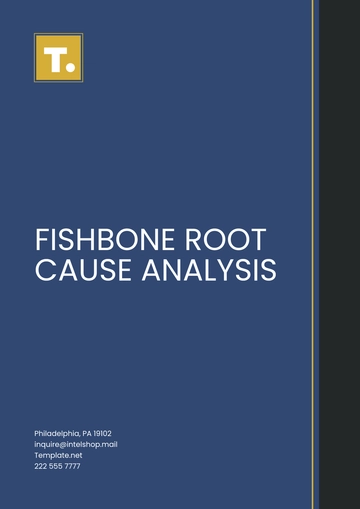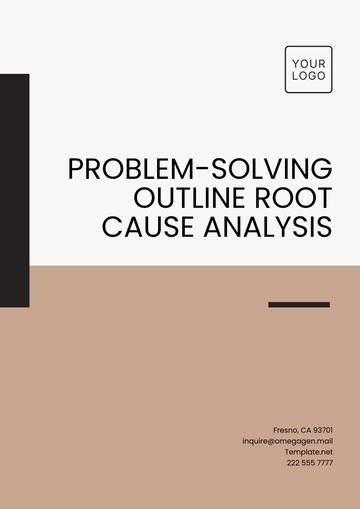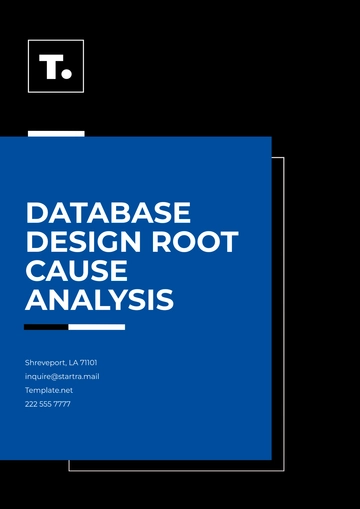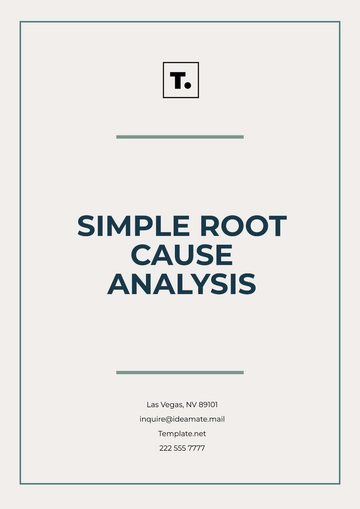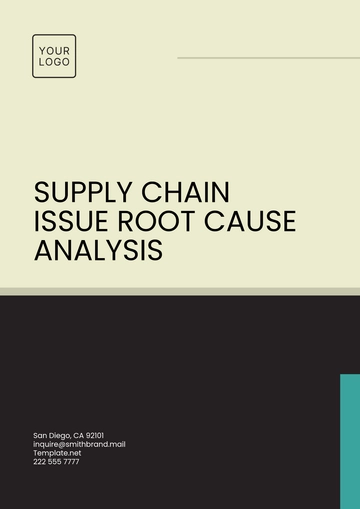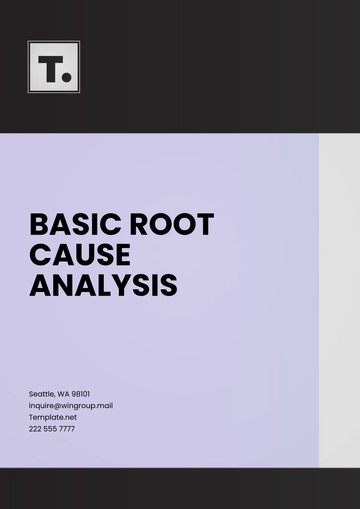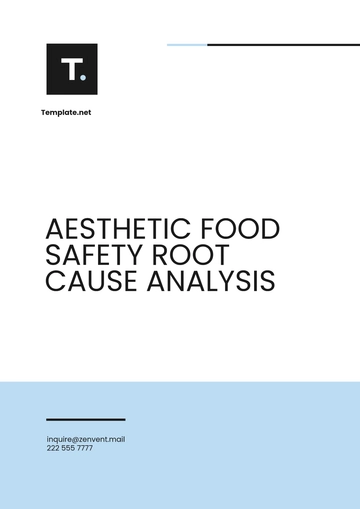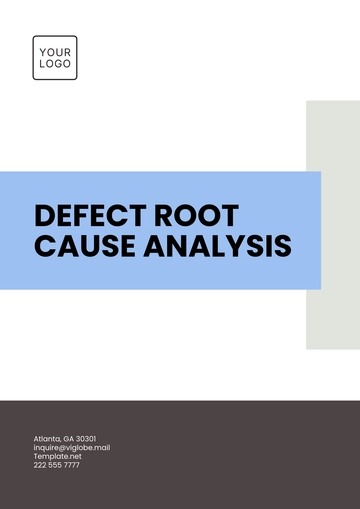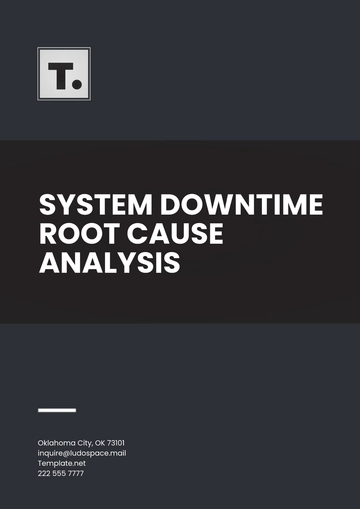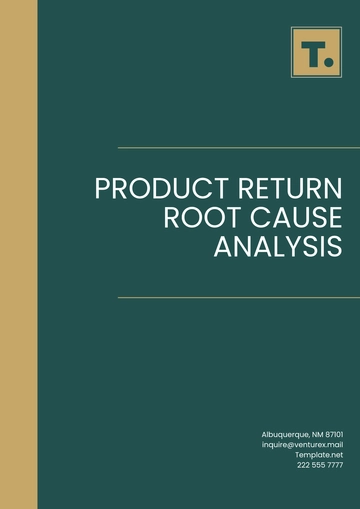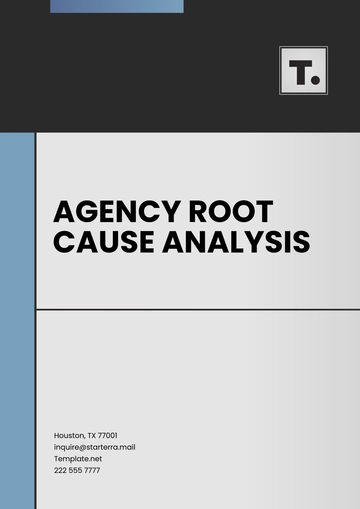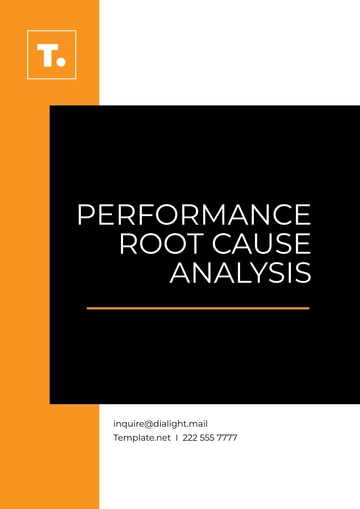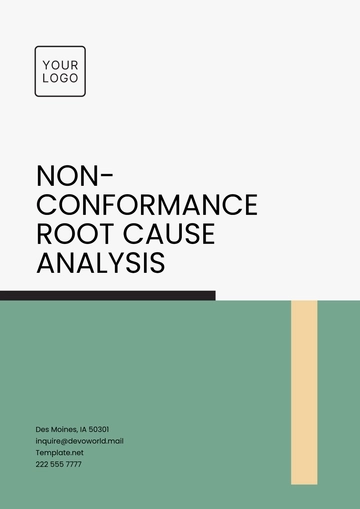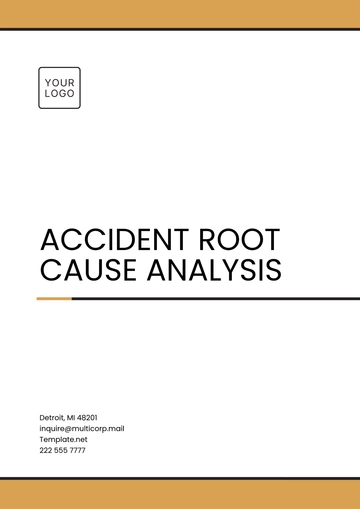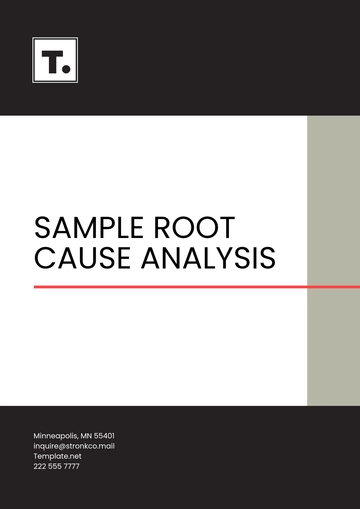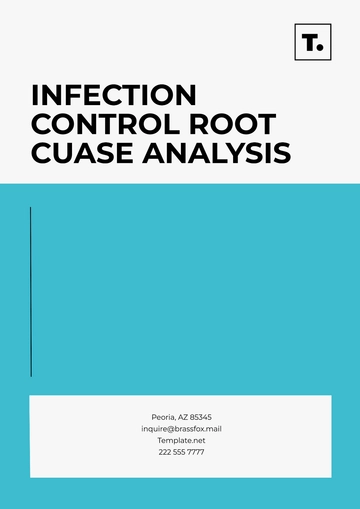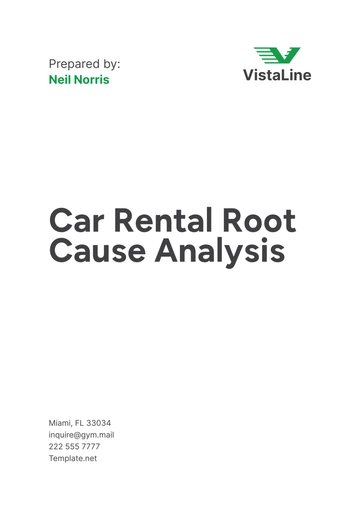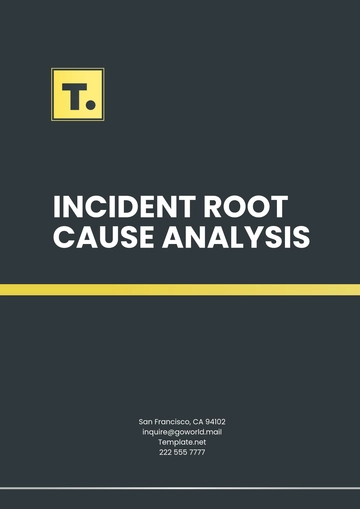Free Operations Quality Analysis Study
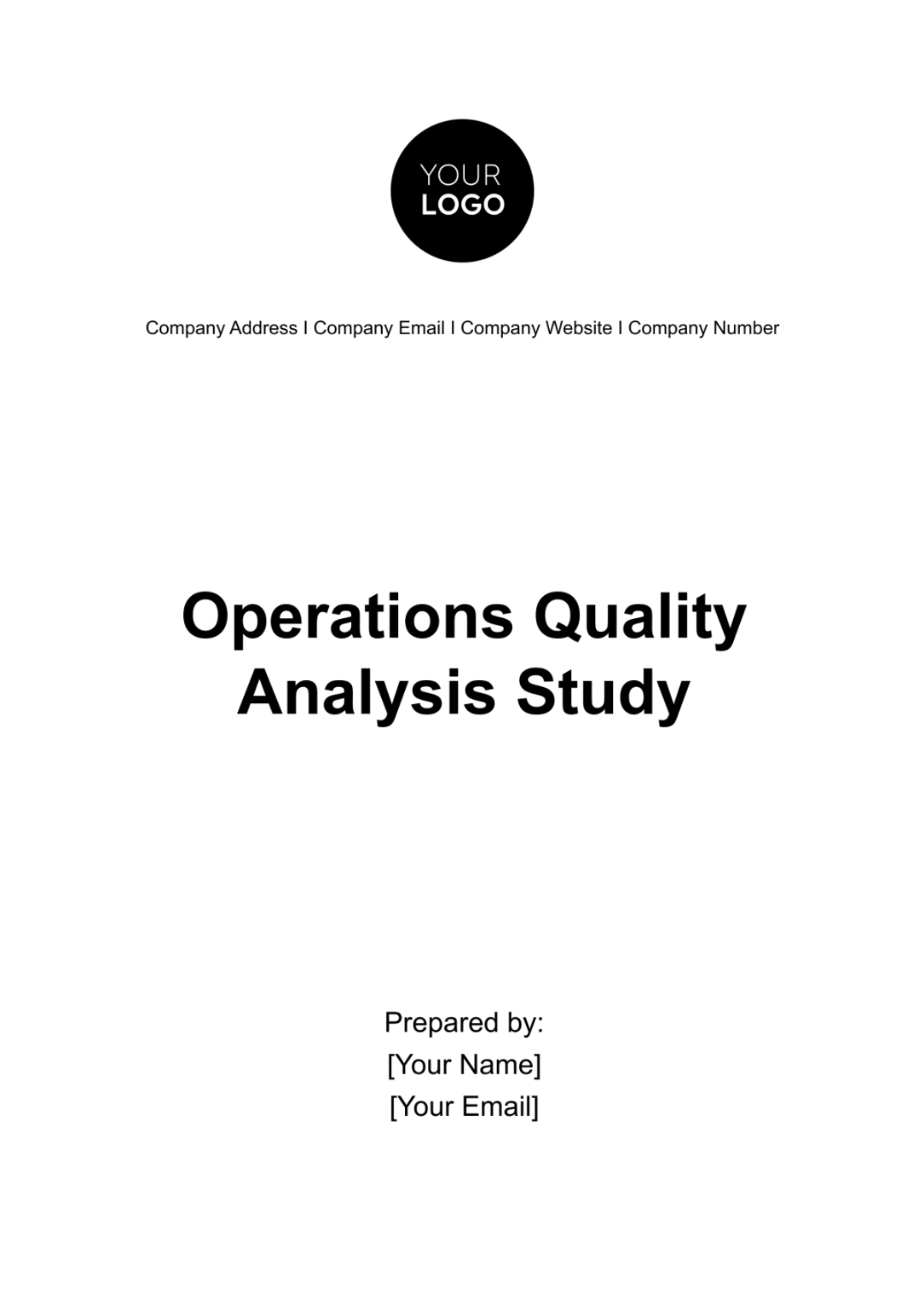
I. Introduction
In today's competitive business landscape, maintaining high-quality operations is essential for the success and sustainability of any organization. Operations Quality Analysis is a critical process that helps businesses identify areas of improvement, optimize processes, and enhance overall performance. This study aims to conduct a comprehensive analysis of operations quality at [Your Company Name], with a focus on identifying key issues and recommending strategies for improvement.
II. Literature Review
A. Overview of Operations Quality Management
Operations Quality Management is a strategic approach that emphasizes the importance of continuous improvement, customer satisfaction, and efficiency in all aspects of operations. It involves the application of various methodologies and tools, such as Total Quality Management (TQM), Six Sigma, and Lean Management, to enhance quality and productivity.
B. Key Concepts and Models in Quality Analysis
Quality analysis involves the evaluation of processes, products, and services to ensure they meet predefined standards and customer expectations. Key concepts include process mapping, root cause analysis, Pareto analysis, and statistical process control (SPC). Models like the Deming Cycle (Plan-Do-Check-Act) and the Six Sigma DMAIC (Define-Measure-Analyze-Improve-Control) framework provide structured approaches for quality improvement.
C. Previous Studies and Findings in Operations Quality
Previous studies in operations quality have highlighted the importance of effective quality management systems, employee involvement, and continuous training and development. Findings suggest that organizations that prioritize quality experience higher levels of customer satisfaction, reduced costs, and increased competitiveness.
III. Methodology
A. Research Design
In conducting the Operations Quality Analysis Study, a mixed-methods approach will be employed to gain a comprehensive understanding of the quality management practices within [Your Company Name]. This approach allows for the triangulation of data from multiple sources, providing a more robust analysis of operations quality.
Qualitative and Quantitative Data Integration: By combining qualitative insights from interviews and observations with quantitative data from surveys and operational metrics, a holistic view of operations quality will be achieved.
Sampling Strategy: A stratified random sampling technique will be utilized to ensure representation from various departments and levels within the organization. Stratification will be based on departments such as production, logistics, customer service, and management levels.
B. Data Collection Methods
Surveys:
Surveys will be distributed electronically to employees across different departments within [Your Company Name]. The survey questionnaire will include both closed-ended questions, such as Likert-scale items assessing perceptions of quality, as well as open-ended questions to gather qualitative insights on specific quality issues and improvement suggestions.
Interviews:
Semi-structured interviews will be conducted with key stakeholders, including department managers, quality control personnel, and frontline employees. These interviews will delve deeper into specific quality management practices, challenges, and strategies within each department.
Interview Protocol:
Introduction and Consent
Questions exploring current quality management practices
Probing questions to uncover underlying issues
Questions regarding improvement suggestions
Closing remarks and gratitude
Observation:
Observational techniques will be employed to directly observe operational processes and quality control procedures in action. This will involve shadowing employees in various roles, observing production lines, and documenting any deviations from established quality standards.
C. Data Analysis Techniques
Techniques | Description |
|---|---|
Statistical Analysis | Quantitative survey data will be analyzed using statistical software to calculate descriptive statistics, such as mean scores, standard deviations, and frequency distributions. Inferential statistics, such as correlation analysis and t-tests, may also be employed to identify relationships between variables and assess the significance of differences in quality perceptions across departments. |
Content Analysis | Qualitative data from interviews and open-ended survey responses will undergo thematic coding and content analysis. Common themes and patterns related to quality issues, root causes, and improvement suggestions will be identified and categorized. This qualitative analysis will provide deeper insights into the underlying factors influencing operations quality within [Your Company Name]. |
Comparative Analysis | The findings from both quantitative and qualitative analyses will be synthesized to provide a comprehensive understanding of operations quality across different departments and organizational levels. Patterns and discrepancies in quality perceptions and practices will be compared, allowing for the identification of common challenges and best practices that can inform targeted quality improvement initiatives. |
IV. Data Collection
Methods | Description |
|---|---|
A. Participant Recruitment | Participants will be recruited through random sampling from employee databases. Participation will be voluntary, and anonymity will be ensured to encourage honest responses. |
B. Data Collection Procedures | Surveys will be distributed electronically, and follow-up reminders will be sent to maximize response rates. Interviews will be conducted either face-to-face or via video conferencing, depending on participant preferences. Observations will be carried out discreetly to minimize disruption to operations. |
C. Quality Assurance Measures | To ensure the reliability and validity of data, measures such as pilot testing of survey instruments, interviewer training, and triangulation of data sources will be implemented. |
V. Results
A. Overview of Participants
A total of [Number] employees from various departments participated in the study. The majority were from production [(Percentage)], followed by quality assurance [(Percentage)], administration [(Percentage)], and sales [(Percentage)].
B. Summary of Data Collected
Survey results indicate that [Percentage] of employees believe that quality standards are adequately communicated within the organization. However, only [Percentage] feel that they have the necessary training and resources to meet these standards. Interviews revealed that a lack of standardized processes and inconsistent adherence to quality protocols were significant challenges.
C. Analysis of Findings
Key Quality Issues | Percentage of Respondents |
|---|---|
Inadequate Training | [Percentage] |
Lack of Standardization | [Percentage] |
Poor Communication | [Percentage] |
Insufficient Resources | [Percentage] |
D. Patterns and Trends
Analysis of survey responses revealed a significant correlation between employee training and perceived quality. Departments with higher levels of training reported higher levels of quality satisfaction. Additionally, departments with standardized processes demonstrated lower variability in quality metrics.
E. Areas of Improvement
Based on the findings, key areas for improvement include enhancing training programs, standardizing processes, improving communication channels, and allocating adequate resources to support quality initiatives.
VI. Discussion
A. Interpretation of Results
The analysis revealed several key findings regarding operations quality within [Your Company Name]. These findings include disparities in quality perceptions across departments, common quality issues such as production defects or service errors, and varying levels of adherence to quality control procedures. Interpretation of these results will involve identifying underlying factors contributing to these disparities and exploring potential implications for overall operational performance.
B. Comparison with Existing Literature
The findings of the study will be compared to existing literature on operations quality management, including relevant theories, models, and empirical research. This comparison will help contextualize the findings within the broader body of knowledge on quality management practices and identify areas of convergence or divergence with established theories and best practices.
C. Implications for Operations Management
The discussion will examine the practical implications of the study findings for operations management within [Your Company Name]. This will involve identifying actionable insights and recommendations for improving quality management practices, addressing common quality issues, and fostering a culture of continuous improvement across the organization. Additionally, the discussion will consider the potential impact of implementing these recommendations on key performance metrics such as customer satisfaction, product/service quality, and operational efficiency.
D. Limitations of the Study
It is essential to acknowledge the limitations of the study, such as potential biases in data collection, sample representativeness, and the generalizability of findings to other contexts. By acknowledging these limitations, the discussion aims to provide a balanced interpretation of the results and highlight areas for future research or refinement of research methods.
E. Suggestions for Future Research
Building on the insights gained from this study, suggestions for future research directions will be offered. This may include exploring specific quality improvement initiatives, conducting longitudinal studies to assess the long-term impact of quality interventions, or investigating the role of emerging technologies in enhancing operations quality management practices.
VII. Conclusion
A. Summary of Findings
In summary, the Operations Quality Analysis Study conducted at [Your Company Name] has provided valuable insights into the current state of operations quality management. The findings highlight both strengths and areas for improvement in quality control procedures, quality perceptions, and overall quality performance across different departments.
B. Recommendations for Action
Based on the study findings, several recommendations for action are proposed to enhance operations quality within [Your Company Name]. These recommendations may include implementing targeted quality improvement initiatives, providing additional training and resources for employees, and fostering a culture of accountability and continuous improvement.
C. Final Thoughts on Operations Quality Analysis
In conclusion, the Operations Quality Analysis Study serves as a valuable tool for [Your Company Name] to assess and improve its operations quality management practices. By leveraging the insights gained from this study, [Your Company Name] can strengthen its competitive position, enhance customer satisfaction, and drive sustainable business growth in an increasingly competitive marketplace.
- 100% Customizable, free editor
- Access 1 Million+ Templates, photo’s & graphics
- Download or share as a template
- Click and replace photos, graphics, text, backgrounds
- Resize, crop, AI write & more
- Access advanced editor
Maximize operational excellence with Template.net's Operations Quality Analysis Study Template. This customizable and editable tool, designed with our Ai Editor Tool, facilitates in-depth analysis of operational quality. Ideal for businesses aiming to enhance efficiency and performance, it provides a structured approach to quality improvement. Elevate your operations exclusively with Template.net.
